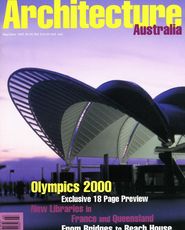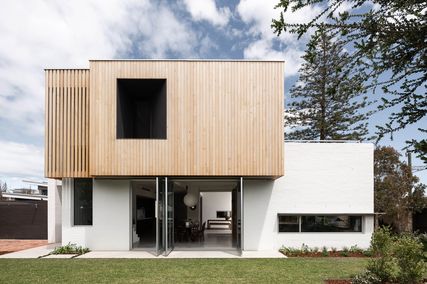Can The Editor Edit?While reading the article by Anthony Styant-Browne (‘Workspace Reform’, AA January-February 97), I was reminded of a fascinating account by Julian Barnes of the stringent and pedantic editing process of The New Yorker magazine. I don’t expect Architecture Australia to be quite the same calibre as The New Yorker, but I do expect certain efforts by the editor to make the magazine readable. It seems elementary, but I do expect the illustrations to be correctly labelled. I also expect the language to be corrected (internal walls don’t “angle out from the external shell”; they have to angle in) and the existence of all words used to be verified. (Is there really such a word as “poched”?) It is not in the Oxford dictionary, nor in the Macquarie. Is this a typographical error?) I also feel that editors should challenge hyperbole reminiscent of real estate agents’ advertisements. In this article, there are examples such as “ceiling thickness is revealed at the edge” … which appears to describe a normal curtain track recess that, judging from the photograph, was handled poorly in this instance; the “articulated detailing of wall/wall and wall/ceiling connections reinforces the object-ness” is, I suggest, a standard shadow-line detail for neatness and built-in dimensional tolerance. And lastly, I wish editors would veto such nonsense as (about the dark strip insert in the carpet) “a virtual thickness of successive occupancy; … syncopated patterns of light and shade on the surface of scrim blinds … both affirm and transform the presence of the historic facade”, and the implication that somehow white MDF is more precious than semi-gloss black MDF, in the pursuit of “egalitarian ideology”. Do editors actually read the text? —From Margaret Ferrie, Oatley, NSW Immaturity Entirely MineA letter in AA (January-February 97) suggests a certain immaturity in the ideas of someone I have cited (not quoted as the letter suggests). This is surely unfair. If there is any immaturity, and readers can decide, then it is mine alone. —From Kim Dovey, Associate Professor, University of Melbourne Let Us Quietly Achieve ProfessionalismOne of those ‘yin-yang’ things happened recently in the history of the history of the Australian architectural profession. The yin? The RAIA, to its credit, awarded its highest honour, the RAIA Gold Medal, to Roy Simpson, of Melbourne; a “quiet achiever” from an earlier, seminal period in Australia’s architectural coming of age. The yang? Tragically, Roy Simpson died before he could receive due accolades from his peers. | Following his notification of the award, I derived enormous pleasure from talking with Roy Simpson, and this reinforced my opinion that he was a scholar, a gentleman and a true professional.
I gathered from our conversation that in the obligatory AS Hook Memorial Address, he was wishing to draw attention to the need to return to the old-fashioned tenets of “Professionalism”. However, the RAIA, the professional body which bestows these awards, is surely guilty of double standards. In the very same RAIA MEMO announcing the award to Roy Simpson, the PD News is “sponsored by … a supplier of building materials” and there is a most wondrous opportunity provided for RAIA members to take up an RAIA Diners Club card and a “free membership offer for the … Frequent Flyers Club, as a significant drawcard.” The Cargo Cult? Independent professional advice? We are presently witnessing car manufacturers who give special vehicles to very important persons. Is the giving, and acceptance, of such a deal professional? Is there not conflict of interest? Can one trust anyone at all whose entire motivation is material reward? I grieve for the passing of one of our profession’s icons, Roy Simpson. In architecture, he was indeed a quiet achiever. I suspect, however, that recognition by his peers was for both architecture and professionalism-a lost virtue which wears marketing like a hair shirt. —From Don Bailey, Sydney Courtesy PleaseRecently I have been looking for work and have responded to various positions advertised. I am astonished at the number of firms which do not have the courtesy to send replies, even if you are unsuccessful. It seems that professional courtesy does not exist among my so-called ‘professional’ colleagues. —From Michael Lucchitti, via email Credit FixesFrom our January/February 97 issue: Order Architects + Interiors should have been listed among the architects for the Olympic Village. Also, we have been advised that Bligh Lobb Sports Architecture are working with Daryl Jackson on the stadium for Melbourne’s Docklands. Finally, Imax cinema architects HBO + EMTB have noted that John Morris and Kevin Ellis were accidentally left off their project team list, and Justin Lamond‘s surname was wrongly spelt. Regrets to all. |
Letters: Architecture Australia, May 1997
More archive
See all
A preview of the November 2020 issue of Landscape Architecture Australia.














